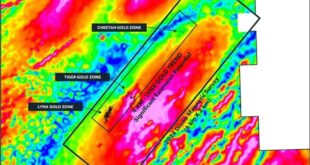At the Unmanned Aerial Systems (UAS) Summit on October 10th, Senator John Hoeven outlined the growing synergy between unmanned operations and the nation’s space missions and the impact of the Test Resource Management Center’s (TRMC) Sky Range program at Grand Sky. The senator made the remarks as part of a discussion with General B. Chance Saltzman, Chief of Space Operations, who Hoeven invited to the annual summit to highlight the links between these air and space missions:
- The Low-Earth orbit (LEO) satellite mission at the Grand Forks Air Force Base.
- Hoeven worked to stand up the satellite mission, which will consist of three facilities, including two in Grand Forks, and will serve as the backbone for all U.S. military communications.
- Hoeven also supported a $6 million Space Development Agency (SDA) project to demonstrate laser communications between satellites and the MQ-9 Reaper, a platform flown by the 119th Wing in Fargo.
- The Air Force eventually hopes that entire MQ-9 missions can be conducted from takeoff to landing relying on satellite communications.
- Sky Range hypersonic missile test bed headquarters at Grand Sky, which includes:
- 16 corporate partners and 7 government agencies.
- $450 million in construction at Grand Sky.
- The development of a data center at Hector Field in Fargo.
- Supporting more than 600 jobs in the Grand Forks region.
“When this conference began 17 years ago, we knew that UAS technology would be an important part of the future of aviation, transform a wide array of industries and be critical for our military. But now, we have moved beyond that original vision, with unmanned aircraft working alongside space technology,” said Hoeven. “The partnership between our state’s air and space missions is essential to the future of military communications, while Sky Range helps ensure we can continue to counter our adversaries capabilities. I appreciate General Saltzman for his partnership in efforts like these, as well as his willingness to come to North Dakota and discuss these exciting developments.”
As part of the summit, Hoeven also received the first-ever UAS Sky Pioneer award from the event’s organizers in recognition of his essential role in establishing and growing the industry in North Dakota.
Standing up SDA’s LEO Mission
Senator Hoeven has worked closely with SDA Director Derek Tournear to stand-up the LEO satellite mission at Grand Forks, which includes Space Networking Center and the Satellite Test and Checkout Center (TCC):
- The TCC will conduct initial operations for the hundreds of satellites SDA will launch in coming years, testing their components and verifying they are ready to join the SDA network.
- The Space Networking Center will support the first layer of the SDA’s satellite operations, which is designed to transport data and facilitate communications. SDA will begin launching that tranche of satellites in 2024, with additional layers to follow, including:
- A tracking layer, to provide warning of advanced missile threats.
- A targeting layer, to ensure constant access to targets around the world.
- A battle management layer, to support command and control of Department of Defense assets.
Establishing Sky Range
Hoeven continues working with TRMC Director George Rumford to fund and advance construction of the Sky Range complex, with the program currently operating out of a temporary hangar at Grand Sky. The complex:
- Will take approximately 36 months to construct after ground is broken in spring 2024.
- Will be complemented by a data processing center that TRMC will establish at the former 119th Wing MQ-9 operations center at Hector Field in Fargo.
- Follows Hoeven’s efforts to transfer all 20 Global Hawk Block 30 aircraft to Grand Sky for Sky Range.
- The transfer was possible due to an agreement that Hoeven secured with Air Force Chief of Staff Gen. Charles Brown.
Currently, the DoD uses an aging fleet of ships deployed across a Pacific Ocean corridor to test hypersonic missiles. The current process is expensive, takes weeks to set up and signals the testing schedule to America’s adversaries. Sky Range will replace the ships with modified UAS, including RQ-4 Global Hawks, that can deploy quickly and will increase testing capacity.
 Unmanned Aerial Vehicle The latest drone news
Unmanned Aerial Vehicle The latest drone news


